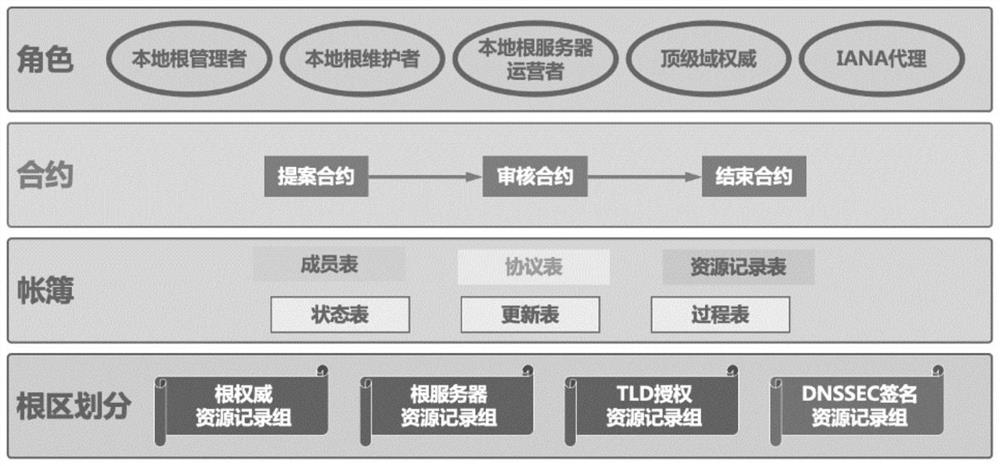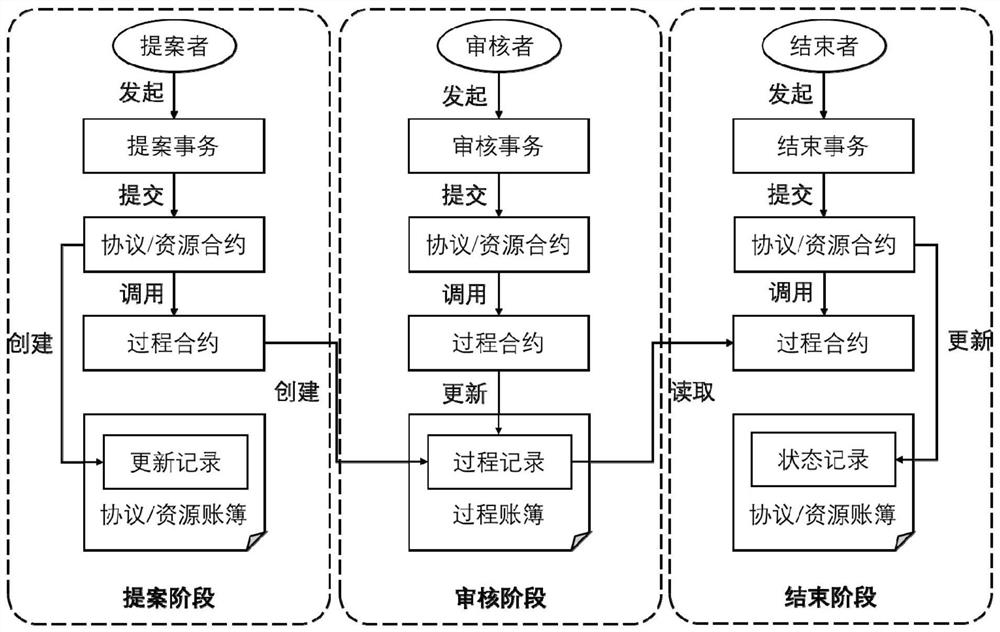A smart contract system based on decentralized dns root zone management
A smart contract, decentralized technology, applied in the Internet field, can solve problems such as malicious squatting, unclear governance subject, and namespace splitting.
- Summary
- Abstract
- Description
- Claims
- Application Information
AI Technical Summary
Problems solved by technology
Method used
Image
Examples
example 1
[0098] Example 1, add a local root member:
[0099] Background: The local root chain is already up and running and currently contains only one local root member, the IANA agent. In order to better promote the local root chain, more new local root members need to be added.
[0100] Scenario: Local root managers ORG_A apply to join the local root chain to participate in the formation and governance of the local root chain; authoritative institutions ORG_B want to join the local root chain to apply for top-level domain names; two companies mainly engaged in telecommunications services COM_A (business scope: local root operation)) and COM_B (business scope: root server operation) also join the local root chain to participate in the operation of the local root chain and the root server system.
[0101] operate:
[0102]1. Local root manager ORG_A join the local root chain: Proposal stage: ORG_A delegate the IANA agent to submit a proposal ORG_A join the local root administrator member...
example 2
[0106] Example 2: Manage the local root zone:
[0107] Background: Within the local root chain, there are IANA agents, local root managers ORG_A, authoritative ORG_B and two telecommunications companies COM_A and COM_B. Since local root managers ORG_A lack practical technical experience in the management of local root areas, they seek appropriate partner agencies to cooperate.
[0108] Scenario: The local root manager ORG_A plans to reach a root server operation agreement with the company mainly engaged in telecommunications services COM_A, and entrust the local root server to the COM_A to operate; ORG_A plans to reach a local root area maintenance agreement with another company that is mainly engaged in telecommunications services COM_B, and the maintenance of the local root area is handed over to the COM_B.
[0109] operate:
[0110] 1. Local root service protocol development: Proposal stage: COM_A submit a proposal to participate in the operation of the local root server. Revie...
example 3
[0114] Example 3: Register a top-level domain name:
[0115] Background: Within the local root chain, there are IANA agents, local root managers ORG_A, authoritative ORG_B and two telecommunications companies COM_A and COM_B. There are currently no top-level domains registered on the local root chain.
[0116] Scenario: ORG_B apply for registration of a top-level domain CN, based on the principle of ccTLD autonomy, it is up to the ORG_A to decide whether to authorize the CN to ORG_B. ORG_B successful registration of the top-level domain, you plan to publish the first resource record (NS record) of the CN on the local root chain.
[0117] operate:
[0118] 1. TLD Authorization Policy Agreement Development: Proposal Stage: ORG_A submit a proposal to set the authorization policy of the top-level domain CN to "Local Root Authorization". Review Phase: IANA agent submits the audit transaction, and the cnaunt policy proposal is voted in favor of within the transaction. End Phase: ORG_A s...
PUM
 Login to View More
Login to View More Abstract
Description
Claims
Application Information
 Login to View More
Login to View More - R&D
- Intellectual Property
- Life Sciences
- Materials
- Tech Scout
- Unparalleled Data Quality
- Higher Quality Content
- 60% Fewer Hallucinations
Browse by: Latest US Patents, China's latest patents, Technical Efficacy Thesaurus, Application Domain, Technology Topic, Popular Technical Reports.
© 2025 PatSnap. All rights reserved.Legal|Privacy policy|Modern Slavery Act Transparency Statement|Sitemap|About US| Contact US: help@patsnap.com



